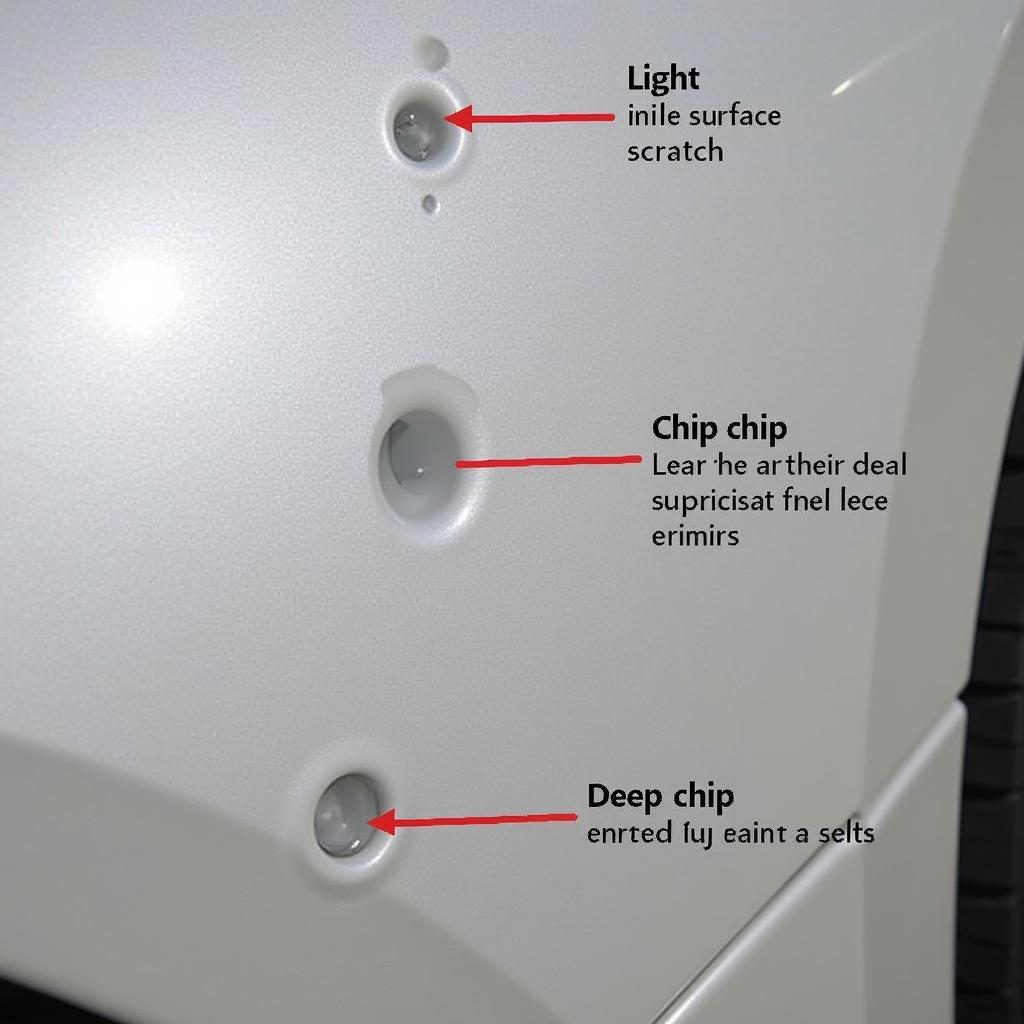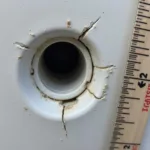DIY car paint chip repair offers a cost-effective solution to minor paint damage, restoring your car’s appearance without the expense of a professional body shop. This guide will provide you with a step-by-step process, essential tips, and answers to frequently asked questions, empowering you to tackle those pesky paint chips with confidence.
Understanding Car Paint Chips and Their Causes
Car paint chips are small areas of damage where the paint has been removed, exposing the underlying metal or primer. They can be caused by a variety of factors, including rocks, road debris, insects, and even minor collisions. Ignoring these seemingly small blemishes can lead to rust and further damage, making timely repair crucial. Learn more about the entire car paint repair process.
Types of Car Paint Chips
Paint chips vary in size and depth, from minor surface scratches to deeper gouges that reach the metal. Understanding the type of chip you’re dealing with is essential for choosing the right repair method and achieving a seamless finish.
- Surface Scratches: These are the most superficial type of chip, affecting only the clear coat or top layer of paint.
- Chips to the Primer: These chips expose the primer layer, requiring more attention to prevent rust.
- Deep Chips to the Metal: These are the most serious type, exposing the bare metal and requiring immediate attention to prevent corrosion. You can find out more about how to repair cracked paint on car.
Gathering the Necessary Tools and Materials
Before you begin, assemble the following essential tools and materials:
- Automotive touch-up paint (matched to your car’s color code)
- Rubbing compound
- Polishing compound
- Car wash soap
- Microfiber towels
- Sandpaper (various grits)
- Masking tape
- Paint applicator (brush or pen)
- Wax and grease remover
Step-by-Step DIY Car Paint Chip Repair
- Clean the Area: Thoroughly wash and dry the area around the chip to remove any dirt or debris.
- Sand the Chip (if necessary): For deeper chips, use fine-grit sandpaper to smooth the edges and remove any loose paint.
- Apply Touch-Up Paint: Using a fine-tipped brush or touch-up pen, carefully apply the paint to the chip, building up thin layers to avoid runs or drips.
- Let the Paint Dry: Allow the touch-up paint to dry completely according to the manufacturer’s instructions.
- Sand and Polish: Once dry, use fine-grit sandpaper to level the repaired area with the surrounding paint. Follow up with rubbing compound and polishing compound to restore the shine. Check out our guide on blend paint repair car for more advanced techniques.
Tips for a Professional-Looking Finish
- Apply thin coats of paint, allowing each coat to dry completely before applying the next.
- Use a magnifying glass to ensure precise application and identify any imperfections.
- Practice on a less visible area of the car before tackling prominent chips. Knowing the peeling car paint repair cost helps you make an informed decision.
- Consider professional car paint repair for larger or more complex damage. For example, you can search for car paint repair stourbridge if you are located in that area.
“Patience and attention to detail are key to achieving a professional-looking result when performing DIY car paint chip repair,” says John Smith, Automotive Repair Specialist at Smith Auto Solutions. “Don’t rush the process, and always follow the manufacturer’s instructions for the best results.”
Conclusion
Do-it-yourself car paint chip repair is a manageable task that can save you money and restore your car’s appearance. By following these steps and tips, you can achieve a seamless repair and protect your car from further damage.
FAQs
-
How long does touch-up paint take to dry? Drying time varies depending on the type of paint and environmental conditions, typically ranging from 30 minutes to a few hours.
-
Can I use nail polish for car paint chip repair? No, nail polish is not formulated for automotive use and will not provide a durable or long-lasting repair.
-
What if the chip is too deep for touch-up paint? For deeper chips, it’s best to consult a professional body shop for more extensive repairs.
-
How can I prevent future car paint chips? Maintaining a safe following distance, avoiding driving on gravel roads, and regularly waxing your car can help prevent paint chips.
-
Where can I find my car’s paint code? The paint code is usually located on a sticker inside the driver’s side doorjamb or in the owner’s manual.
-
How do I match the touch-up paint to my car’s color? Most auto parts stores can help you find the correct touch-up paint based on your car’s make, model, and year.
-
What should I do if the touch-up paint doesn’t match perfectly? Slight color variations can occur, and blending techniques can help minimize the difference.
“Matching the touch-up paint to your car’s color is crucial for a seamless repair,” advises Sarah Johnson, Lead Technician at Johnson Auto Body. “Consult a professional if you’re unsure about the correct color match.”
For further assistance, please contact us via WhatsApp: +1(641)206-8880, or Email: [email protected]. Our customer service team is available 24/7.



